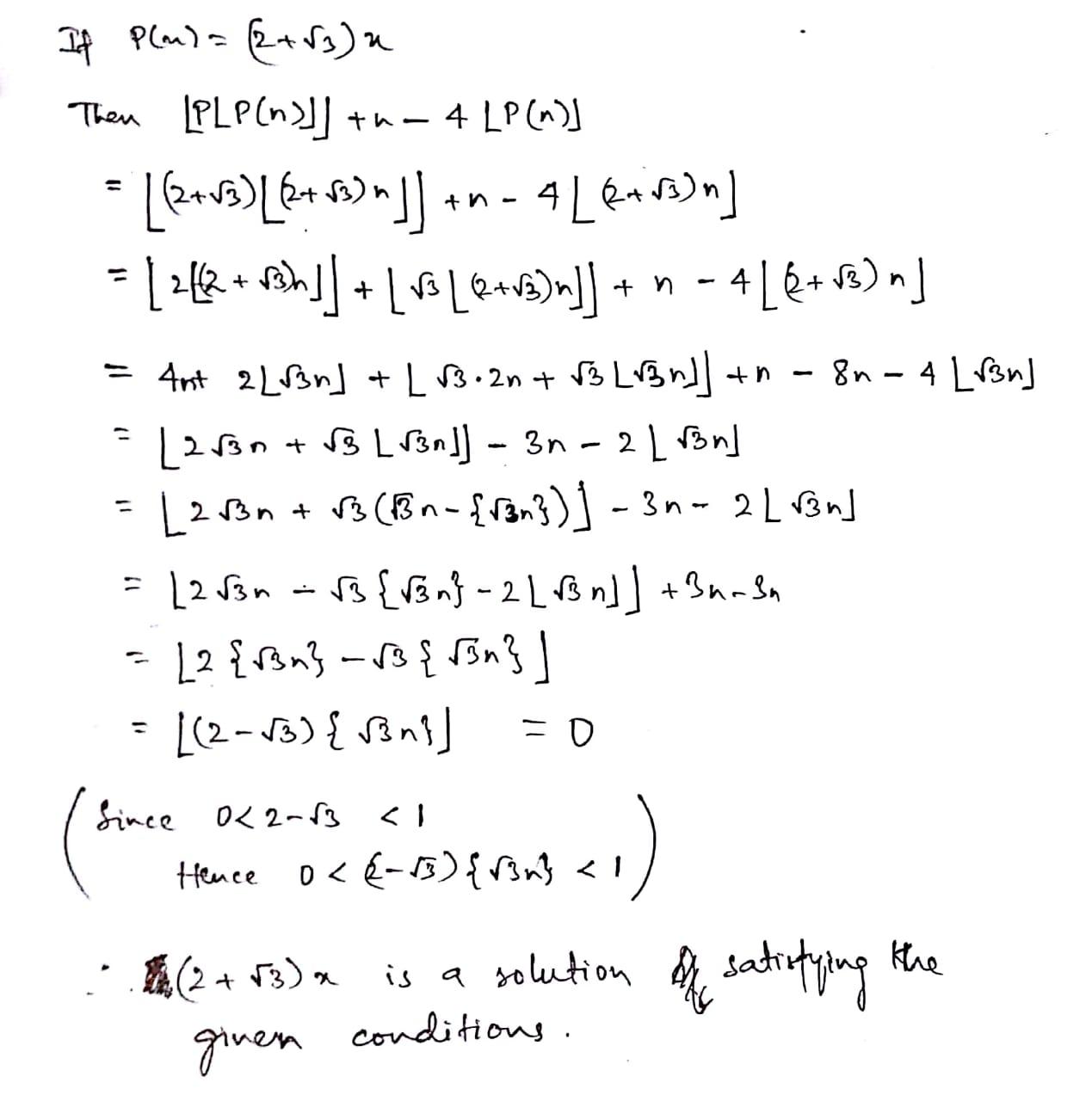Nitin Prasad
Forum Replies Created
-
AuthorPosts
-
 Nitin PrasadParticipant
Nitin PrasadParticipantGiven eqn-
$$x^2-pq x+(p+q)=0$$
Consider discriminant of the above equation
$$D=(pq)^2-(p+q)^2=-(p^2+q^2+pq)=-(p+\frac{q}{2})^2-\frac{3q^2}{4}\leq 0$$$$Hence D\leq 0$$
But for roots to be real, D>=0 and hence D=0 which is possible only when p=q=0
Hence no pair of natural number (p,q) exists which satisfy the given condition.
 Nitin PrasadParticipant
Nitin PrasadParticipantYeah, your answer is correct again.
 Nitin PrasadParticipant
Nitin PrasadParticipantYeah your answer is correct!
 Nitin PrasadParticipant
Nitin PrasadParticipantLet-
- $$A=\{ n : n<10,000 \& n\in \mathbb{N}\}$$
- $$A_3=\{ n :n \in A \& 3|n\}$$
- $$A_5=\{ n :n \in A \& 5|n\}$$
Hence, number of positive integers less than or equal to 10,000 which are divisible by neither 3 nor 5
$$=|A_3^c\bigcap A_5^c|$$
$$=|(A_3\bigcup A_5)^c|$$
$$=10,000-|(A_3\bigcup A_5)|$$
$$=10,000-|(A_3|-|A_5)|+|(A_3\bigcap A_5)|$$
$$=10000-\lfloor\frac{10000}{3}\rfloor-\lfloor\frac{10000}{5}\rfloor+\lfloor\frac{10000}{15}\rfloor=10000-3333-2000+666=5333$$
Yeah, your answer is correct!
 Nitin PrasadParticipant
Nitin PrasadParticipant3) Degree of P(x) at most 1: Consider P(x)=ax+b. Since P(0)=0 Hence b=0. Now we have ⌊a⌊an⌋⌋ + n = 4⌊an ⌋. Now observe that-
$$\lim_{n\longrightarrow\infty}\frac{⌊a⌊an⌋⌋ + n}{4⌊an⌋}=\lim_{n\longrightarrow\infty}$$$$\Longrightarrow \frac{a^2+1}{4a}=1$$
$$\Longrightarrow a=2+\sqrt{3}\; or\; a=2-\sqrt{3}$$
a) $$ P(x)=(2-\sqrt{3})x$$ cannot be a solution for it fails to satisfy the given condition for n=1.
b) Surprisingly $$latex P(x)=(2+\sqrt{3})x$$ does satisfy our solution. The equation
$$⌊(2+\sqrt(3))⌊(2+\sqrt(3))n⌋⌋ + n = 4⌊(2+\sqrt(3))n ⌋$$ reduces to$$⌊(2-\sqrt(3)){\sqrt(3n)} ⌋=0$$ which is indeed true. Calculation part for this shown below

-
AuthorPosts